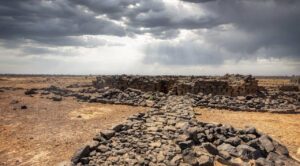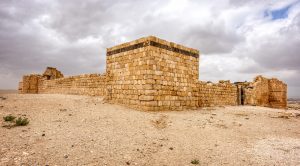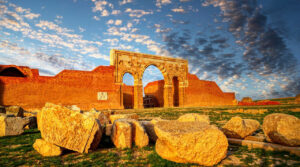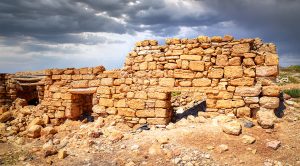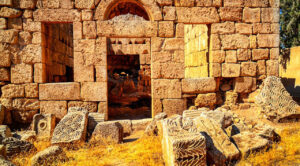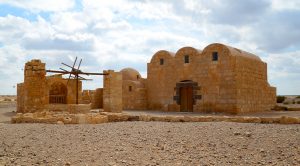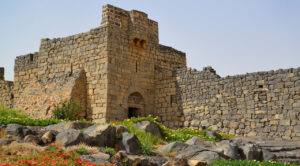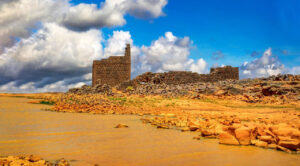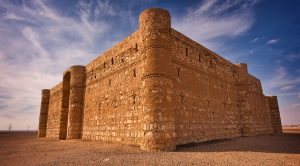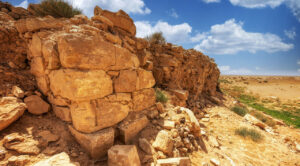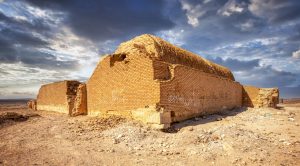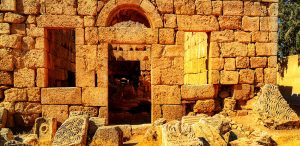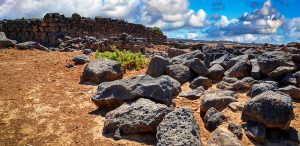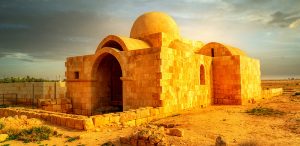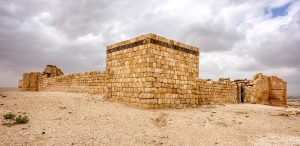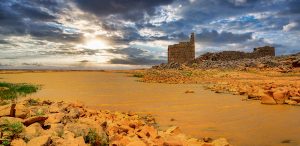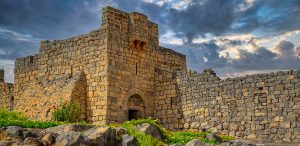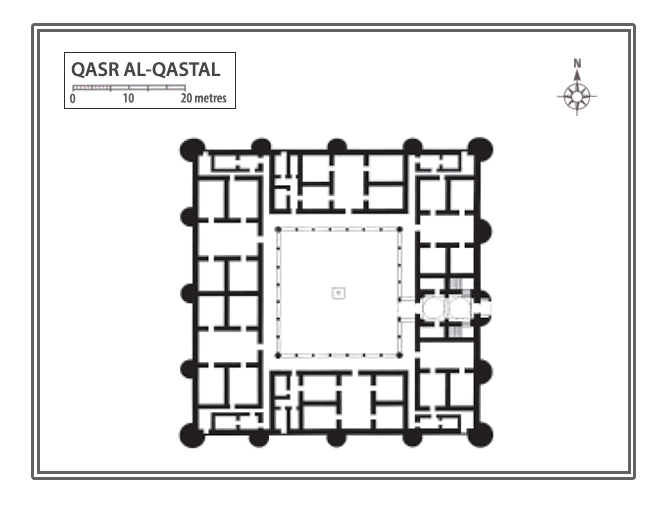Originally established as an Umayyad settlement in the 8th century by Caliph Abd al-Malik ibn Marwan, known mainly for building the magnificent Dome of the Rock Mosque in Jerusalem, and ornately renovated by the Mamluks in the 13th century, Al-Qastal remains the oldest and most complete such settlement in the Near East. The remains of the minaret at Qastal are especially important as it is the only one extant from the Umayyad period, making them one of the oldest minarets in the world.
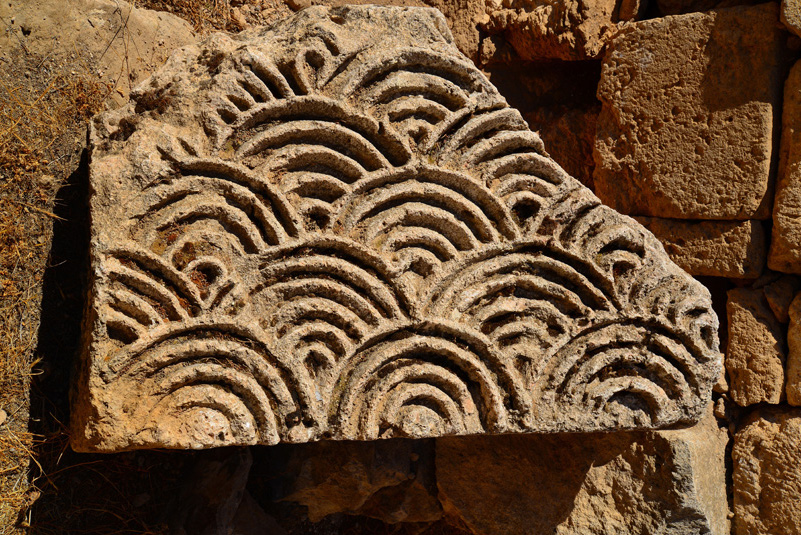
Qasr Al-Qastal is considered one of the desert castles and is just 5 km from Qasr Al-Mushatta. It is a large complex with separate and widely spaced units which include: a central palace, a bath, a mosque, a village, a cemetery and numerous underground cisterns as well as a substantial dam about 400 m long and 4,50 m wide.
Qasr Al-Qastal is built of dressed limestone blocks, occasionally of megalithic size, with an alternation of one stone showing its long side and another one showing its short face, with a rubble core. The central palace forms a square measuring about 68 m to the side with 3-quarter round towers at the corners, and 3 semi-round towers on each side except the east entranceway. Originally, the palace is believed to have consisted of two stories, although the upper storey has not survived.
The entrance opens onto a long vestibule divided into two squares bays by a transverse arch with a bench and elbows-rests on either side. A narrow door at the far end of the vestibule leads into a courtyard. Around it, there are groups of six units, each consisting of a large main room with two smaller ones on either side. The porticoes and most of the rooms were originally paved with coloured mosaics which can still be seen here and there. Many sculpted blocs in the shape of niches with vegetal decoration have been found.
To the north of the palace is a mosque which has been rebuilt and restored more than once since the middle of the nineteenth century and interestingly, is not oriented precisely eastwards facing Mecca. Only the lower courses of the western and northern walls belong to the original mosque which was built of the same stone cut in the same size and shape as the palace. In the northwestern corner is a minaret with a cylindrical shaft resting on a rectangular base. The importance of this minaret lies in the fact that it is the earliest minaret surviving from the Umayyad period.
About 400 m to the North-West of the qasr is a partially preserved structure with splendid mosaic pavements. The building may have been part of a bath complex similar in plan to Qasr Amra and Hammam As-Sarah. The mosaic floors show, among other scenes, a fierce lion that has just pounced on the back of a bulky bull trying to bring him down, and a leopard devouring a gazelle. The vitality of the animal scenes and the subtle gradation of colour tones make these mosaics superior to comparable floors and show considerable technical skill.
About one kilometre east of the main complex is the remains of a stone dam, built to save rainwater. Formed from the quarry which supplied stone for Al-Qastal’s palace, the dam had a capacity of around two million cubic meters. More than 100 cisterns had been identified within a one-kilometre radius from the qasr.
And finally, the cemetery, which is the earliest Muslim cemetery in Jordan, is located southwest of the palace. Several inscribed tombstones belonging to the Umayyad and Abbasid periods have survived and are now displayed in the Madaba Archaeological Museum. It could be of interest to note that earlier tombs of the cemetery may be oriented toward Jerusalem.
Today the site lies in ruins and a portion of the palace has been covered by a modern house owned by a powerful clan who appropriated much of the site and used architectural elements of the Qasr as decoration.
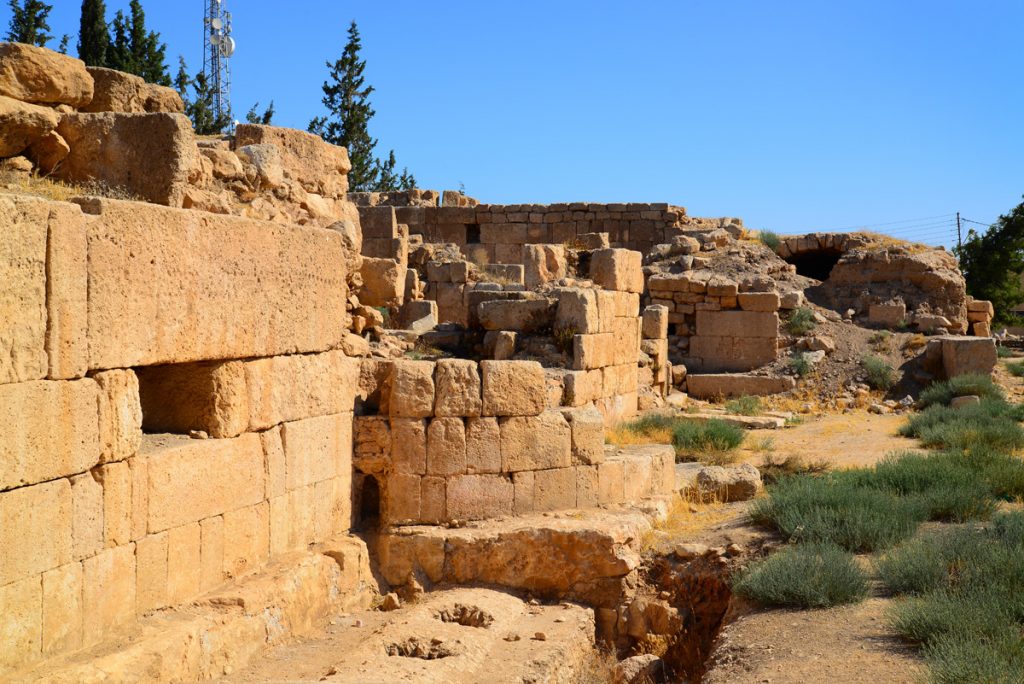
Textual evidence from the poet Kuthayyir ‘Azzah indicates that the Qasr al-Qastal complex was originally built by Caliph Yazid bin Abd al-Malik. The fact that the Qasr al-Qastal complex was completed, while the nearby Qasr Al-Mushatta was never finished, indicates that Qasr al-Qastal may be the oldest Umayyad construction in the area. Tombstones from Al-Qastal indicate that after the fall of the Umayyads the site was used by the Abbasid Caliphate. When the Abbasid Caliphate fell, there was a short period when the site was abandoned. Later, under the Ayyubid and Mamluk dynasties, Al-Qastal was re-settled, with several small buildings dating back to this time.

